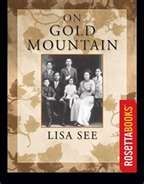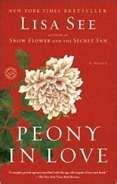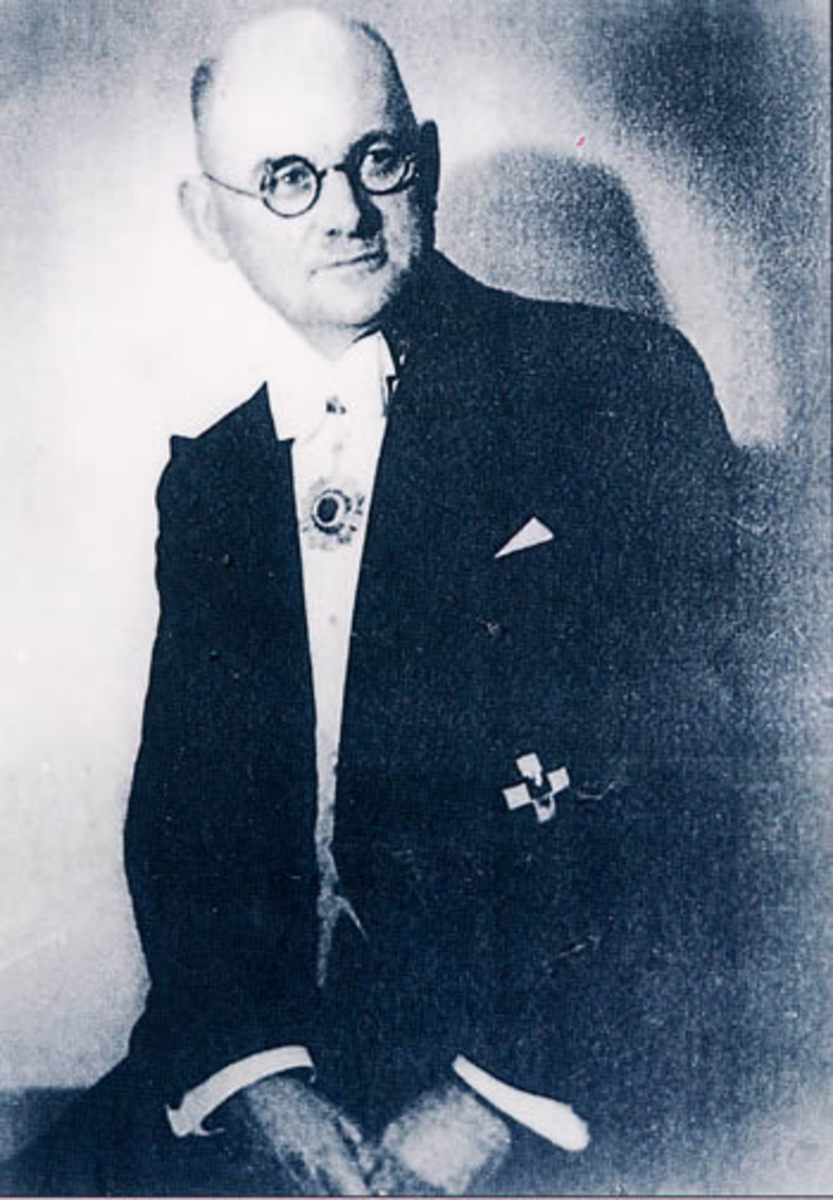Why Visualization Doesn't Work

Visualization Can Help Us to Achieve Our Goals for 2015. Interviews with bestselling authors Lisa See and Ron G. Holland.
Using imagination, i.e visualizing, is one of the most effective methods of bringing about change in our lives. You may have watched "The Secret", in which people talk about using visualization to achieve success. So why do so many people struggle with visualizing?
I interviewed two bestselling authors, Lisa See and Ron G. Holland, about how they use visualization in their lives and work.
This article is the companion piece to Why Affirmations Don't Work.

Lisa See
Interview with Novelist Lisa See
Lisa See is the author of On Gold Mountain as well as several novels based on Chinese history and culture and the Chinese American experience. Her books have appeared on the New York Times bestseller list. She says:
I started doing visualization about 30 years ago. It was a way of filling in the place where one could have all the negative thoughts, and put in the things that were a little more positive instead. Whenever the negative thoughts would come, it was a way of putting in the positive ones instead.
I have very, very bad migraines. When I was pregnant with my first son, I had these terrible migraines, and of course I couldn't take anything. I had a Lamaze teacher who would come over to my house, and she would run me through a visualization to help me get rid of my headaches. So originally, it was for health purposes.
I don't remember how I first heard of visualization. I live in California, so it was all very big back then. I see affirmations as part and parcel of visualization.

Using Visualization for Writing
So much of writing is about imagination. Really, writing is visualization. You are imagining a character in a situation where you are literally trying to visualize it so that you can write it. Obviously, you don't just make things up. I do a lot of research first because I would not really know, for example, the city of Shanghai.
Once you have all the details, to visualize a character on those streets, in that city, in that particular situation, you are really combining the research with imagination. I've done things like, in Shanghai Girls, there's a scene where the sisters are out on the streets on the day when some bombs are dropped on Shanghai. I had done a lot of research and read first-person accounts of what it was like. Then, to put these two fictional sisters in that situation, I was trying to visualize what they were seeing. So it's not just a visualization for me, I'm trying to visualize it for them.
All visualization is, when you come down to it, is imagination. When I had those migraines, I saw myself floating on a raft on the ocean and letting the headaches drain out. That's still just imagination, it's putting your mind into a different place. It's not that different from saying, okay, now I have to have these two girls on Nanjing Road when the bombs dropped.
Using Visualization to Achieve Goals
I have done this in the past, but not so much now. I am still a big affirmation-user, but I don't really do much visualization just for myself now. When I was first starting to write, I did visualize what a successful writer was like.
It was a combination of affirmations and visualizations, and also making treasure maps. This was a kind of manifestation of the visualization so that I could see it, I could stick it on my refrigerator or above my desk, or on the bathroom mirror.
It was a long time ago now. I had found a picture of a woman with a briefcase. She was in a sort of Superman pose, flying through the sky. That was the centrepiece of the treasure map, and then there was other stuff around it.
The way I use it most now is for when I am working on a book, and it’s just – I don’t know how to meditate, but I think this is sort of close to it. It’s sitting in a quiet place and allowing the mind to go in a directed way to the place that I want it to go. I don’t need to close my eyes.
I don't think I would have chosen a briefcase today. But that was the '70s. For me, it had to do with being successful and professional, but also wanting to travel and fly around. I had seen that in a magazine and I remember cutting it out.
There have been things where my mom has said to me, "You could never even have imagined or visualized it". I remember when I saw a poster for one of my books on the Paris Metro, one of those really gigantic posters. I never could have even visualized that. It's not something that I would have even ever thought of. That was very exciting.
My favourite affirmation is, "Everything always turns out more exquisitely that I ever plan". That poster was an example of that.
Books by Lisa See - Books by Lisa See and Reviews of Peony in Love and Shanghai Girls
The most extraordinary thing about Peony in Love is that most of it is narrated by a young dead woman, from beyond the grave. See below for more information.

Peony in Love - Review of Peony in Love by Lisa See

Using Visualization for Health
I had my own visualization way back. I started getting migraines when I was about 13. And I had this visualization which I still use today.
In my Mom’s house, she had a painting of a train. It’s done b a Chicano artist. My visualization was that I was on a train, just going through the countryside. My head was throbbing, and I would just go on the train through the countryside. Now, it didn’t cure my headaches like the meditation I did with the Lamaze teacher. But what it did was to focus mind so clearly not on my headache that I could be really visualizing, okay, now we’re going through a field , now we’re passing a town, now there’s a pretty lake, now we’re going to the mountains.
I still do that one. And now , I have that painting in the bedroom.
So that was my first visualization – I am on a journey. And the focus of the journey was not to cure my headache. But it means that I can focus my mind in such a way that I am enjoying my trip.
Difficulties with Visualization
Why Do People Find It Hard to Visualize?
I find it difficult to do it for a sustained period of time. I know there are some people who can do it for a really long time.
It helps to have a guided visualization, with someone else to talk me through it. Even now, I do still get migraines, not that often, but when I do, I have
Why Do People Find It Hard to Visualize?
I think it's about finding stillness. It's very hard for us now to be in a place that is really still. We are all doing so much and we also have all kinds of thoughts bouncing around in our heads that really want to intrude. So that is what I think is the hardest part. To screen out all of that extra noise and focus within.
So, even if you are only doing it for a couple of minutes, that is better than none at all.
Advice If You Are Finding It Difficult to Visualize
Start really small and don't worry .
You really don't want to get into "Here I am trying to visualize and it's not working". Or "I can only do it for 3 minutes and I wanted to do it for 30".
Just start where you are, that's all. Start where you are and don't worry about the length of your visualization or how perfect it is. If you can only do it for two minutes, then maybe do it three times a day.
When the commercial comes on the TV, put it on mute, close your eyes and visualize for two minutes while the ads are playing. You don't have to be in some special place at some special time and allot some big amount of time to do it. You can do it anywhere at any time.
Great Articles - Articles to Help You with Visualization
- How to Develop a Habit
Great article. Do something for a few minutes every day and it quickly becomes a habit. - Visualize Your Fitness – Walking
Visualization is simply using your imagination to see or visualize something happening. We all do it all the time, only we often do it negatively! Anytime you imagine your body in negative ways, change the picture and the message to a more positiv

On Gold Mountain
Lisa See's first book set the pattern of exploring Chinese American history.
People had been telling stories about my family for years and years and years. I had always wanted to do that, and then all the circumstances kind of mulled together. My great-aunt invited me over so she could tell me some stories. And actually, originally, you know how sometimes at Christmas, people send out a letter saying what they did this year? I thought, I'll just get all the facts about the family. Nobody had ever gathered them. I would just send them out next year just to the family, and then everybody would have them. And then it grew.
Then I did a magazine article, and it just kept growing from there. I did not start out thinking, oh, this is going to be a book. I just started out to do one of those Christmas letters.
When I was about two years in, I had all these questions about why the family did the things they did, why did they go back to China in 1901, why did they have a contract marriage, this sort of thing. And I had jury duty.
I had gone to the UCLA library and checked out all the books I could find on Chinese American history. At that time, there were maybe eight books. That was all there was. I checked them all out and I took them with me for when I had jury duty.
Back then, you went for two weeks, and you sat in a big room, and if they called you in, great. If they didn't call you in, you just sat in that room. And that's what happened for two weeks, I was just in that room. And that first day, reading one of those books, I got an answer to one of my questions. It was the history, or there was some law, I can't even remember what it was. But there was an answer to one of my questions. And as I read on, within two days of reading that stuff, I knew, oh, yes, this could be a book. Because history is something that happens to individual people and families. So once I saw that, I thought, I can tell the history of the Chinese in America through the eyes of one family - my family. And that's when I knew it could be a book.
It was just this incredible - wow! I can do this. And there was nothing like that out there. Even today, there are a lot of memoirs, but there is nothing quite like On Gold Mountain.

Shanghai Girls
Shanghai, sisters, and beautiful girls
Sometimes with a book, you just have one idea. But this time, I had about five things I was interested in that I had been thinking about for a long time. So one was Shanghai at this final moment before things started to go downhill, when it was considered the Paris of Asia. And then the Japanese invaded, there was the Sino-Japanese war went into WWII which then went into civil war, and until the mid-1990s it was just not the same place. So there was this final, final moment.
I wanted to write about the so-called "beautiful girls", these young women who posed for Shanghai advertisements. I'd been collecting that poster art for a long time. And I often looked at their faces and wondered, what were their lives really like? They were called "beautiful girls" and they were beautiful, they were so beautiful. In these posters, it looked like such a beautiful, comfortable, elegant, lush, fun life. But what was it really like for them?
And then, I wanted to write again about the Chinese American experience and what it was like for people to go through Angel Island, what it was like for women in particular, who came and had arranged marriages.
And I wanted to write about the confession program of the 1950s which very specifically targeted Chinese Americans. So again, this was something that had not been written about very much, not even by scholars. So I got people who had been through it to tell me about that time. There is so much pain and guilt and remorse about those years, but I got people to tell me about it. And again, it is just one of those parts of American history - world history - which has sort of been lost.
And then finally, sisters. These are very deep relationships we have in life, the sibling relationship. It is typically the longest one we will have in our lifetimes, and it is unique. Your sister will stand by you and support you and love you no matter what, and yet it's your also sister who knows exactly where to drive the knife to hurt you the most.
So this time, there were about five or six things I wanted to write about.

Why I Write about Chinese History and Culture
Lisa See's first book was based on her family history.
Here in Los Angeles, I've got about 400 relatives. There are about a dozen that look like me; the majority are full Chinese. And there's the spectrum between.
I grew up in a very large Chinese American family. So when I was growing up, that's what I saw. They always tell writers "write what you know", so I'm writing what I know.
There are a lot of things I don't know, and that I've wondered about. I think that's true in every culture, but we just take it for granted. There are all these rituals and traditions but we don't know the real origins of them. Like why do we go on an Easter egg hunt? I'm sure there's some religious reason for it, but I don't know what it is.
So I've taken things that are done in our family, like weddings, marriage traditions, things for one-month birthdays, things for funerals, that have always been done in my family, but I have wondered where they came from.
My books are published in Taiwan and Hong Kong and mainland China. There are Chinese communities all over the world. I get a lot of emails from Chinese people in different countries and from here in the U.S. I am very involved with the Chinese Historical Society and the Chinese American Museum here in L.A. I get invited to do things at other Chinese American Museums around the country, and I do them if I can.
When On Gold Mountain came out, the reception here in Los Angeles was wonderful. That was very nice, because of course, it's about our community here.

Ron G. Holland
Interview with Millionaire-Maker Ron G. Holland
Ron G. Holland is the author of many personal development books including Speak and Grow Rich and his newest title, The Eureka Enigma. Over the years, he has helped people become millionaires. He says:
In a way, I stumbled upon visualization accidentally. In my early 20s, I built up a chain of motorbike dealerships. I ended up with several shops. Everything seemed to be going well until, one day, I ran into major financial difficulties.
I didn't have any money and I was trying to get money from banks and venture capital companies, but nobody would lend me any money.
What I did was I thought, "What is it that I really want?". What I really wanted was a room full of motorbikes. So intuitively - I didn't really know what I was doing or why I was doing it - but intuitively, I started to visualize my motorbike shops absolutely full of motorbikes. In my mind's eye, every day for 10 minutes in the morning and 10 minutes in the evening, I would keep drawing this image in my mind's eye. I saw so many motorbikes in the showroom that we couldn't even close the doors. We had that many motorbikes.
I had this beautiful, beautiful image, a beautiful picture. After about three days of intense visualization, I got this little idea in the back of my head that said, if you need money, what you need to do is go out and buy all the motorbike papers. Phone up all the people who are advertising their motorbikes for sale and say, "This is Ron Holland Motorbikes, do you still have your motorbike for sale? Bring it into the showroom and we will sell it for you on a sale-or-return basis".
The funny thing is, nothing happened. I thought, "Oh, no. The idea has fallen apart on me, it hasn't worked". What happened, on the Saturday, a guy came along and said, "I'm looking for Ron Holland. Can you sell my motorbike for me?". He left his motorbike, we gave him a receipt for it. Then loads and loads of bikes came in and filled those seven shops.
It took us about three months of intensive telephone canvassing but we filled those seven shops. It was absolutely amazing. So that was my first use of a kind of intuitive visualization, and it created an unbelievable success. It really created my first fortune.
If you think about it, the other dealers had to pay for stock, we just made phonecalls. Over the years, I have shared that story with so many people and once they start using visualization, they have turned their lives around.
Most people think they need money, but really, they may need something else.
[Note: To read about Secrets of the Millionaire Mind, see Making a Quantum Leap.]
Generating Ideas
Most people don’t link visualization with idea generation. The more you visualize, the more ideas you get. So me visualizing those seven motorbike shops, what I got after three days, I got a brilliant idea, what I call a “Eureka”. People don’t realize that, when they start visualizing, what they are looking to do is stimulate their minds to give them ideas, eurekas, solutions, hunches, a way forward.

Using Visualisation as a Writer
Visualization helps me tremendously. When you are writing, it doesn't matter whether it is a fiction book or a nonfiction book, whatever it is, if you visualize what you are trying to accomplish, whether it is a paragraph or a chapter, if you start visualizing the events and all the things around it, you start coming up with ideas.
So visualization is an important part of the creative writing process.
When I am writing a book, I actually make a dummy of the book and have it lying around my house. It's there in reality. The minute I conceive an idea for a book, I make a dummy of it . I print off a dummy book jacket, stick it on there, and I have it there when I am writing on my computer every night. So in my mind, the book is already finished.
Visualization is so, so powerful. My job in life is to teach people how to use it more and more and more, and really get their brains working like a biocomputer. Most people use words, but we need to get the words in our brains working with the pictures.
Achieving Goals
When I wanted to go to America, I visualized packing my suitcase, getting on a jumbo jet, arriving in New York, getting a publishing deal. I visualized that over and over again.
You have to think things through. When I get a client who wants to make money, I visualize working with that client, where we are going to get the money from, what is the best time to visualize.
Everybody has to find what is best for him or herself. I personally find that 10 minutes in the morning and 10 minutes in the evening is what works for me. Action is more important than visualization. Silence, stillness and meditation is the glue that holds everything together.
[Note: See also, Making a Quantum Leap.]
Why People Find It Difficult to Visualize
We naturally use pictures, particularly as young people, but the educational system tends to drum out the use of pictures. Even people who can use pictures generally don’t harness that power in such a way that it can generate ideas.
That is one reason people have problems. Besides this, I don’t think a lot of people have thought through the real benefits of visualization. They might have even tried it once or twice, but because they didn’t get any immediate benefit, they stopped doing it.
My educational process involves teaching people how it works, why it works, why they should do it, why they should keep doing it, why they might need to change the images they are using if nothing is happening for them. It is a complex process.
Over the years, this has created millionaires,
What To Do If You Are Having Difficulties
One of the things I find is that people try to set their goals before they have their minds working like a biocomputer.
I say, start visualizing very, very small goals. Start visualizing those small goals every day. Once you start to generate ideas, that’s the time to go, “Wow. This visualization is working”.
Once it starts to work, then start making your goals bigger and bigger.
Creative Ideas for Achieving Your Goals
You also need to visualize ideas about ways to achieve your goals. Don’t just visualize logical, practical ideas. You need those as well as a whole load of creative ideas, impractical ideas. It doesn’t really matter. Visualize as many ways you can think of for how that goal can be achieved. Give your biocomputer a whole load of programs. Give it something to work with.
Give your biocomputer some idea of how to accomplish your goals.
Use of Emotion
I am sure you have heard that it’s important to link your visualization with emotion. People always talk about the use of positive emotion – the happiness, the glee, the satisfaction – how does this feel?
I talk about all of that, but I also talk about negative emotions. Most self-help books don’t talk about the use of negative emotions.
There are so many people out there who, for one reason or another, have negative emotions. They need to harness that energy and put it to some good use. If you do that, you will find supercharged power that you didn’t know you had before.
People are losing their jobs, being put out of their homes. A lot of people are facing eviction every day, unemployment is rising. Those negative emotions need to be harnessed rather than letting them go ‘round and ‘round in your head. Use the power of those negative emotions to turn your life around.
Changing the Negative to Positive
One time, I was sitting in my office in Boston, Massachusetts. This was in the early ‘80s. Things were not going well. Every time the phone rang, instead of closing the deal, I would blow the deal. I thought, “If I continue this way, I’ll go bankrupt”.
So I sat down and worked out what I was doing wrong. I realized I was running a negative film in my head. I was remembering lots of negative things that had happened. Those negative thoughts became a self-fulfilling prophecy.
So I made a mental film that put me in a permanently positive state. I remembered deals I had made, relationships I had had. And I ran this positive film loop in my brain over and over again.
When the phone went, I was in success mode. And I started closing deals again.
Even if you are in a negative mode, don’t visualize the negative pictures.
If you think you don’t have a series of successes with which you can make a positive film, make them up. The mind can’t tell the difference between reality and fantasy.
The negative film can go on for years. You have to stop it. Nobody can stop it for us. We have to do it. That’s why it is called self-help.
The Eureka Enigma
Eureka means “Wow! I’ve got the solution! I know the answers!”. That’s what a eureka is.
An enigma is a puzzle, a conundrum or a mystery.
So the Eureka Enigma is why some people come up with eurekas, ideas, solutions, and other people, no matter how hard they try, can never come up with an idea.
Or the other part of the enigma is, some people come up with brilliant ideas and never make any money. Other people come up with brilliant ideas, and before they can act on them, the next week they come up with another brilliant idea. And the next week they come up with another brilliant idea. The problem is, if they keep coming up with brilliant ideas and not doing anything with them, that’s just as frustrating as not coming up with any ideas.
So that’s the eureka enigma. How to just come up with one idea, make that one idea work, and use it to turn our lives around.
Not everybody wants to make a lot of money. I’m very clear about that. Some people just want to be happy,
The Eureka Enigma is about achieving your goals, whatever they are.
There have been books before about how to program your brain as a biocomputer. I don’t think any have gone into it deeply enough. This book really does show you how to program your brain properly to get the ideas you need.
A lot of people don’t recognise their ideas or they don’t use them to get the results they want. The Eureka Enigma shows you how to get the ideas and how to take action on them.
Most people, the minute they come up with a big idea, think, “Hang on a minute, I haven’t got the money, I haven’t got the skills”. I am saying, get started anyway, use visualization, and you will be shown the way. Keep visualizing every day and every day you will be shown the way forward.
If you want to climb a mountain, and you are standing on the ground, you can’t see the path that leads to the top of the mountain. If you want to climb Mount Everest, you can see the beginning of the path, but you certainly can’t see the path that leads all the way to the top.
Most books about visualization say that if you use your imagination and visualize, you will achieve your goals. But they don’t say how this will happen. They don’t how that how it’s going to happen is that you’re going to get ideas showing you how to make it happen.
When you use visualization, the path will be revealed to you on a day-to-day basis as you go along. The more you visualize, the more clear it gets, the more ideas you get, and the whole book shows you how to do this.
Great Stuff on Amazon
Using Positive Affirmations for Visualization
If you struggle with visualization, you can use affirmations - positive statements - to help you visualize.
For more about this, see below.
Resources
- 7 Reasons Why We Break Our New Year's Resolutions
Article on why we break our resolutions, and how we can keep them. - Achieve Fabulous Success
Lots more articles and blogs to help you achieve your unlimited possibilities. - The Key to Everything - Practical, Effective Methods
Did you know that children with cancer have successfully used visualization to reduce and remove tumours? The Key to Everything contains practical, effective methods to help you achieve your goals and attract what you want into your life. Whether yo - The Key to Everything Community
This site gives you support to achieve your goals. - CDs for Radiant Health and Healing
Use the power of your mind for physical and emotional healing. - The Eureka Enigma: 7 Keys to Realizing Your Dreams
The latest title by millionaire-maker Ron G. Holland - Ron Holland Direct
Ron G. Holland's HQ















